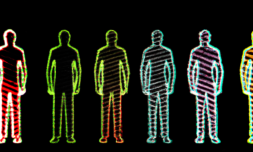Over 4.9 million people in the UK have diabetes, with a further 13.6 million individuals at risk of getting type 2 diabetes and another 850,000 left undiagnosed. Isn’t it time we collectively learned about the condition?
It’s been a year since I was diagnosed with type 1 diabetes, but there are still days when I forget that I have the condition. The knowledge and the experience of what having it is fully like seeped in very slowly over the past few months, perhaps because of how little guidance I was given throughout.
Most of what I learnt, I learnt alone. The rest I picked up on social media and in podcasts, created by fellow type 1 diabetics who also know how lonely it can be discovering this disease alone.
Although the internet was a wonderful place for me, it also directed me to a lot of information that, frankly, was misleading and largely untrue. The internet is home to a vast amount of myths about diabetes, such as how large amounts of exercise and a carb-free diet will prevent anyone and everyone from getting type 1 diabetes.
As someone who lived with a strict eating disorder and addiction to exercise for years, I knew this information could not possibly be true. But that’s not the issue.
The internet’s sea of myths is a reflection of how little the general public knows about diabetes. It can be funny in some instances, but in others it could ultimately put someone’s life in danger.
Diabetes: the good or the bad type?
Ben Goulding, 31, was diagnosed with type 1 diabetes seven years ago. He is one of the many who feels his condition is widely misunderstood.
He recounts times when members of the public, friends and even his own family have previously made comments and asked questions about his disease, including whether it was caused by eating a lot of sugar as a child, or whether diabetes is ‘self-inflicted’.
Goulding tells me he was once asked whether type 1 is ‘the good type or the bad type’ – a label that often wrongly distinguishes type 1 from type 2, and which adds to the stigma that many type 2 diabetics are subject to because of its common association with obesity and older age.
‘It can make me feel a little frustrated when people tell me what they think I can or can’t eat or offer certain treats,’ he adds. ‘Although I’ve become quite used to it so I just let it go.’
And misinformed comments are normally made with good intent so a friendly correction is usually the best remedy, he adds.
One time, Goulding was stopped by a security guard at his local supermarket. It was only after he walked through the door scanners without his shopping that he realised it was his continuous glucose monitor – a device that provides blood sugar data to its user in real time – that was setting it off.
‘The security guard did not understand and watched on as I waved my seemingly bare arm through the scanner,’ he says.
Perhaps the most alarming question Goulding has been asked, however, is whether he should be injected with insulin if he has an episode of hypoglycaemia – low blood sugar – and faints.
Insulin is the last thing that a diabetic should be injected with to treat low blood sugar. It will only worsen an episode of hypoglycaemia, potentially causing the individual to go into insulin shock.
Such questions are often harmless and come from a place of curiosity and care. But they show that, without education, we are unintentionally putting a lot of people in danger.
Low blood sugar, in its most severe forms, can lead to death. It must be treated immediately with fast-acting glucose, like jelly baby sweets or a coca cola. Meanwhile, if a person has fainted they must be injected with glucagon – a medicine used to treat emergency cases of hypoglycaemia.




















